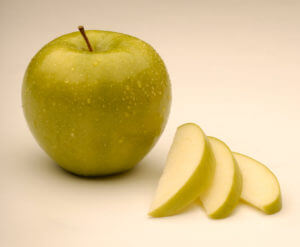Researchers are working to figure how much – if at all – they should be concerned about a controversial paper threatening to take some of the shine off the CRISPR gene-editing technique. But should those concerns extend to the realm of agriculture, where CRISPR is becoming increasingly popular?
First, it should be stated that the research did not address gene editing of crops, which has key differences from gene editing in humans. The paper, which is drawing criticism from other scientists, reported an alarming number of “off target mutations” during an experiment that attempted to correct eye disease in mice. It was published in the journal Nature Methods. But should the outcome prove repeatable,biotechnology researchers will move more cautiously when using the promising technology in the modification of entire animals – including humans.
However, the results of the Nature Methods study are not likely to be repeated, for three reasons summed up in another recent rebuttal, this one by Gaetan Burgio, a geneticist at Australia National University. First, Cas9 –the part of the CRISPR editing system that cuts at a particular DNA sequence–was delivered in an unusual manner, such that off-target effects might be expected. Second, it was an under-powered study; the statistical outcome resulted from the sample size being too small, in this case consisting of just one control mouse and two conditional mice–not a very robust study, to say the least.. Such results must be considered in context of all previous CRISPR editing experiments on animals. Third, the experimental design did not optimize approaches that could have reduced accumulation of mutations. For all the attention that the study received, it really seems that there was nothing new, except perhaps for the lay public unfamiliar with CRISPR. The aforementioned rebuttal put it like this:
The novelty here is non specialists of genome editing technology or the general public are discovering Off target effects, which is somehow, not such a bad outcome. Many will realise that the safe use and efficient delivery of CRISPR technology for therapeutic purpose has a long way to go. As many mentioned before, a careful evaluation of possible OT is of course critical and predictable for any therapeutic purpose.
Looking at agriculture
There are also reasons to look at the issue of “unintended mutations” in agriculture differently from human gene editing, where such problems could prove catastrophic. Let’s assume, for the sake of argument, that these off-target mutations are a concern for CRISPR-related gene editing. Off-target simply means an unintended effect as opposed to what researcher’s are trying to produce. It’s akin to side effects of a drug and it’s not a new concept in the realm of genetic modification. There is still a substantial difference when comparing the technology’s use in human medicine, versus its use in agriculture. In the case of the latter, the new study need not raise any red flags, since genetically modified crops go through substantial testing and review before being grown commercially.
That doesn’t mean, of course, that anti-GMO activists won’t use these new concerns about off-target mutations as a rallying point, which could put new crops under more political scrutiny–that’s already happening in fact as we note below. For years, ideological opponents of crop biotechnology have attempted to rile consumers, and politicians, often focusing on the fact that early GMOs were created through transgenic processes – involving the combination of genetic material from unrelated species.
This concept of moving even a single gene across species can be distorted so as to sound riskier compared with older strategies in which thousands of genes are shuffled within plants of the same species with unpredictable consequences. “Foreign DNA” can sound scary to somebody unfamiliar with the idea that DNA works the same in all organisms; it’s just expressed differently. And so, creating novel genetic combinations between two plants might seem ‘safe’ compared with a crop that uses a gene from a bacterial species or an animal, but there is in fact no scientifically meaningful difference.
Transgenic lightning rod

Transgenic foods have been a lightning rod in the biotech food industry for many years, but now there’s a growing category of high-tech crops and foods created with genetic engineering using only the genes within that crop or from related species. These cisgenic combinations, at least in theory, should be less likely to draw criticism from anti-GMO forces that have long opposed transgenic crops. These new crops, including the non-browning Arctic Apple, are being created through a range of techniques, including the manipulation of RNAi and, more recently, CRISPR.
With the likelihood that more and more agricultural genetic engineering will involve these new techniques, biotech opponents have recently switched their ire from “foreign genes” to the specter of “unintended” or “off target” effects. This is the tack taken during a recent interview about CRISPR by long-time GMO critic Michael Hansen, senior scientist at Consumers Union:
“These methods are more precise than the old methods, but there can still be off-target and unintended effects. When you alter the genetics of living things they don’t always behave as you expect. This is why it’s crucial to thoroughly study health and environmental impacts, but these studies aren’t required.”
The ‘fear of the unknown card’ was played again in a recent Fox Business article, which quoted Megan Westgate, executive director of the Non-GMO Project:
“While these new technologies are touted to be more precise than older genetic engineering technologies, it is widely accepted in the scientific community that there can be ‘off target’ effects to the genome when the technologies are utilized. GMOs, including the products of these new technologies, have not been adequately tested—no long-term feeding studies have been conducted—and people are starting to connect these experimental technologies to health concerns.”
Food and off-target effects
The Non-GMO Project provides food products with a seal–a kosher-like approval stamp that acts as a beacon for GMO-wary customers. The labels have been criticized by those who see them as little more than a marketing ploy, considering the proliferation of Non-GMO labels on things such as water and salt-and hundreds of other items that have no GMO alternative.

But many of the foods that have escaped this designation were just as vulnerable to off-target effects during their production as any GMO food. Conventional breeding, by definition, creates random mutations–many with unknown ‘off-target-like’ effect.
Then there is mutation breeding, which a breeding process which depends on dosing highly toxic chemicals or using ionizing radiation to break up an organism’s DNA. In effect blowing holes in chromosomes, mutagenesis leads to high numbers of mutations, which plant breeders can then put through an artificial selection process. There are some 3,000 plants created this way, including such products as sweet grapefruits and high end durham wheat used in making Italian pasta, which are often sold as “organic.” But it’s a highly imprecise breeding method. And less precision means a higher chance of off-target effects. Indeed, with mutation breeding, there is no target at which to aim, at least in the beginning. You’re shooting blindly with toxic chemicals or a beam of gamma rays, X-rays, or neutrons, and waiting for the pieces to path together with novel outcomes.
But do these off-target effects really matter in crops? A brief uproar followed a 2016 decision by the US Department of Agriculture, which said it would not regulate a mushroom created through CRISPR. However, all crops intended for human consumption still fall under the authority of the US Food and Drug Administration.
“Pointing out that there are ‘off-target effects’ makes sense philosophically, but it dodges the matter of what you have in mind as an alternative to the biotech crop under study,” Adi Zaltsman, a plant engineering specialist who heads a company called Plant Genetic Engineering, told me.
Focusing his research on the goal of creating crops that can fix nitrogen all on their own–a prospect that would revolutionize farming and go a long way toward making food production more efficient and sustainable — Zaltsman also commented with a perspective on the larger picture, as our population continues to grow.
There are only two solutions. The first is reducing the population drastically, which only a monster would advocate, so we are left with the other strategy and that’s biotechnology. While there certainly are important issues, worldwide, related to patents and monopolization of the food supply, widespread rejection of the technology itself would be a grave mistake, leading to an exacerbation of human suffering.
David Warmflash is an astrobiologist, physician and science writer. Follow @CosmicEvolution to read what he is saying on Twitter.































